Book Review "The food lie" by Hans-Ulrich Grimm
Industrial food is harmful because glutamate and sweeteners harm the enteric nervous system, or the second brain, and the brain.
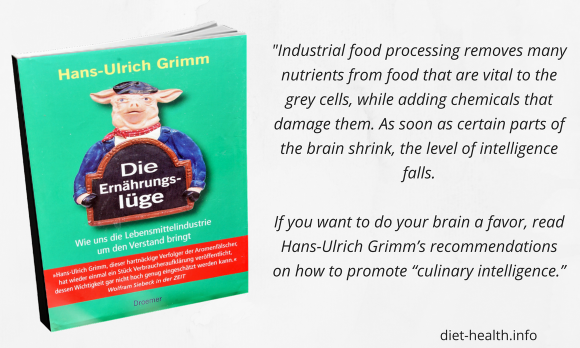
Table of contents
Conclusion
In this book, the author informs us about foods that cause harm to our brain and gastrointestinal tract (enteric nervous system, ENS). The culprits are convenience foods and ready-made preparations such as sauces and artificial flavorings, as well as soft drinks and too many sweets.
Hans-Ulrich Grimm pays special attention to monosodium glutamate and sweeteners, especially aspartame, but also deals with "Rita.." ("methylphenida..") and specific additives. He explains some of the side effects caused by consuming these substances.
It is, however, also important to know that monosodium glutamate is a salt of one of the amino acids and is present in almost all foods that contain protein. Only a minority of people suffer ill effects when they consume processed “free,” or unbound, glutamate.
The book highlights case studies from the print media, such as the Frankfurter Allgemeine Zeitung (FAZ), Neue Zürcher Zeitung (NZZ), The New York Times, Der Spiegel, Die Zeit, and New Scientist.
Grimm selected only cases that have been substantiated by authenticated scientific evidence and cites the authors of each of these scientific papers. The book is therefore a comprehensive look at, or if you like, a sort of meta-analysis of the subject. Wherever possible, the food industry portrays an entirely different perspective (See also medicine and evidence-based medicine).
See also this book review on the harmfulness of milk — or even better the book review on Milch besser nicht! (Milk, better not!) by Maria Rollinger.
1. Summary
There is growing consensus in the scientific community that nutrition can permanently change the chemistry of the brain. However, neurotoxicity testing of food additives is still not carried out on a wide enough scale. Through industrial processing, many harmful chemicals are added to foods in order to prolong shelf life and enhance taste — with no regard to their impact on human health.
These additives can lead to an increase in speech, language disorders, autism, and attention deficit disorders in children and depression, multiple sclerosis (MS), Parkinson’s, and Alzheimer’s disease in adults.
Grimm reveals many ways in which the gut (considered to be “our second brain”) affects people’s health, behaviors, and emotions. From this perspective, leaky gut syndrome (an imbalance in the gut flora and a damaged gastrointestinal wall) is considered to be the cause of diseases such as autism, Alzheimer’s, Parkinson’s, and multiple sclerosis.
Here are some of the most important facts aimed to help the reader avoid the harmful effects of the drugs and food additives currently promoted by the industry:
- Eating gluten- and dairy-free diet (GFCF), along with avoiding certain kinds of additives, can lead to an improvement in ADHD symptoms, which is equivalent to 70 to 90 percent of that achieved with the drug "Rita..".
- Called “the flavor that kills brain cells,” monosodium glutamate is one of the food additives that act as a neurotoxin and is a common factor in many neurodegenerative diseases.
- Despite many fake studies that present it as a “safe additive,” the sweetener aspartame can cause side effects such as headaches, dizziness, short-term memory loss, endocrine malfunctions, and disruptions in sexual functions.
- The consumption of sugar in cola, sweetened drinks, and chocolate bars causes high spikes in blood glucose levels, which are followed by sleepiness, lethargy, and decreased memory recall. In the long term, these products can become addictive and may also cause diabetes.
- By promoting the absorption of aluminum and lead in the brain, citric acid is also a dangerous additive that unfortunately is used in large quantities by the food industry.
- Other dangerous food additives that should be avoided include the following: sorbitan monolaurate (E number: E493), sorbitan monooleate (E number: E494), the emulsifiers E470 and E476, the sweeteners "mannit.." (E421), lactitol (E966), and isomalt (E953), guaran or guar gum, (E412), the E numbers E466 (carboxymethyl cellulose, CMC, or cellulose gum) through E469, carrageenan, (carrageenins, E number: E407), and sulfites (E220 through E228).
A list of recommended further reading on the food industry can be found in the book reviews Lügen, Lobbies, Lebensmittel (Lies, lobbies, food), and Salt Sugar Fat.
Contents and notes

The images I have added to this book review serve to break up the text and provide space for additional comments. There are no images in the book itself. The ones in this article are either my own, are public domain images, or are taken from Wikipedia.
For those interested, I have linked many terms to the corresponding Wikipedia entries (italics, last updated: October 2013). Links not in italics lead to articles of my own or are anchor texts.
Wikipedia can be a useful tool depending on the topic. However, it is often one-sided, presenting only the view of interested parties or the current opinion. This is often the case, especially for languages other than English, for example, for entries in German.
Note: The chapter titles and all quotations in italics are translated from the original German.
Contents and notes
A Blow to the Brain — Are We Eating Ourselves Stupid?
Bizarre Behavior — Chemistry and Character
High as the Sky — Glutamate, the Flavor That Can Kill Brain Cells
The Sweet Club — Money and Power: How the Industry Reacts to Criticism
Near to Nothing — What Goes to a Child’s Brain
More than Scary — Children on Drugs: The "R-Experiment"
Straight from the Can — Alzheimer’s and How Food Destroys the Brain
Red Hot Ears - Food and the Psyche — the Power of Feelings
Organ of the Year — The “Brain in the Gut”: How the Gut Has a Mind of Its Own
Listen to the Signals — The Gourmet Diet That Makes You Clever and Happy
Dictionary — What’s Good, What’s Bad: The ABCs of Brain Food
The author gives a list of keywords at the beginning of each chapter, and some of the chapters have several subtitles.
The Cover and Blurb
Wolfram Siebeck, journalist for Die Zeit is quoted on the cover of the book: Yet another piece of consumer education from tenacious food detective Hans-Ulrich Grimm, the importance of which cannot begin to be estimated.
The back cover warns: Industrial food can impair your mental performance and your emotional well-being.
Blurb: Brain activity can be affected by a single meal. No other organ is as regulated by food as the brain is. What we eat greatly affects not only our intelligence, but also our mind and behavior. Until recently, brain scientists believed that the brain functioned to a large extent independently. It has only emerged in recent years that changes in modern dietary patterns have had and are having a dramatic effect on brain function.
Industrial food processing removes many nutrients from food that are vital to the grey cells, while adding chemicals that damage them. As soon as certain parts of the brain shrink, the level of intelligence falls. Brain diseases such as Parkinson’s and Alzheimer’s have also been associated with nutrition.
Children are also affected. Many school children don’t want to or have difficulties studying and are inattentive or hyperactive. These conditions are often caused by chemicals in our food. Here are some examples of the above:
-
Monosodium glutamate is toxic to the nerve cells and can have adverse effects on sufferers of Parkinson’s and multiple sclerosis. Almost six times more monosodium glutamate is produced today than was produced 25 years ago.
-
Color additives are being consumed in excess, especially by children. They are found in candy, cola, and ice cream. They can cause behavioral problems, hyperactivity, and learning disorders.
-
Although Omega-3 fatty acids are essential to healthy brain function, they have almost disappeared from our diet. They are being driven out systematically by pizza and sausages. These important fats are very sensitive, causing them to spoil quickly. They are therefore undesirable to the food industry, whose main aim is to have products with a long shelf life.
It's time to be concerned! Not too long ago, these “brain killers” didn’t play a major role in our diet. However, the authorities who approved them for use in food neglected to consider how toxic they are to the brain. Leading scientists now insist on examining, once and for all, the risks that such substances pose to the brain.
If you want to do your brain a favor, read Hans-Ulrich Grimm’s recommendations on how to promote “culinary intelligence.” Traditional cooking and gourmet cuisine are not only tastier, but also increase levels of intelligence and happiness. This is because the ingredients used in them have been proven to be good for the brain.
About the author
Dr. Hans-Ulrich Grimm (link in German), (born in 1955), is a journalist and author living in Stuttgart, Germany. He was an editor for Der Spiegel (German magazine) from 1989 to 1996, where his main area of research was industrial food. He has published several books on the topic. Grimm studied German language and literature, history, and education studies.
Grimm has written a dozen books including Vitaminschock (The vitamin shock) and Mund auf, Augen auf (Open your mouth, open your eyes). He has also written on health problems relating to the consumption of milk.
2. Book review
The book focuses essentially on the brain and the enteric nervous system (ENS) or the “brain in the gut.” As in the case of cancer, scientists have long claimed that the increase in the incidence of Alzheimer’s disease and dementia are simply a result of a longer life expectancy. This book reveals new information to the contrary.
2.1. A Blow to the Brain
Policymakers greatly underestimate how harmful today’s poor nutrition is to the brain, explains Dr. Beyreuther. The lack of neurotoxicity testing of food additives is especially tragic, he believes.
Many nutrients that are essential to the brain are removed from foods during industrial food processing, while chemicals are added that are harmful to the brain.
Beyreuther has noticed that the diet of many Alzheimer’s patients differs greatly to that of healthy people. He tells of one Alzheimer’s patient who reports having always eaten canned fruits and vegetables in jars
, and who shopped her whole life at Aldi and never at farmer’s markets (p. 15).
If the most recent findings in the field of neuroscience are anything to go by, supermarkets, according to Grimm, are high-risk obstacle courses
full of products which cause loss of brain cells (cerebral atrophy).
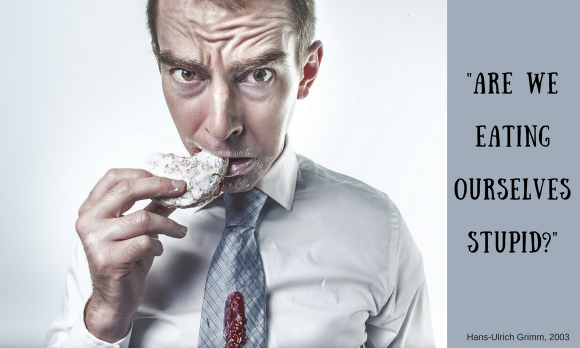
Are we eating ourselves stupid?
he asks. We have an imminent worldwide epidemic,
warns Edward Truschke, president of the Alzheimer’s Association (United States) (p. 16).
Alzheimer’s Disease
This chapter opens with a short explanation by internationally renowned brain researcher and molecular biologist Dr. Konrad Beyreuther (link in German). Beyreuther, formerly of Harvard University and currently director of Network Aging Research at Heidelberg University says: Although the brain makes up only two percent of total body weight, it burns up twenty percent of the body’s energy
.
| Truschke’s comment comes in the context of a global aging population (lubbockonline.com, July 2000). He predicts that 22 million people will have Alzheimer’s by the year 2025. | ||
| Dr. Robert Katzman of the University of California, San Diego, believes this number will be as high as 45 million by 2050 (albeit thinking linearly). |
Between the ages of 65 and 86, Alzheimer’s cases double with every five years of age. Although there is no cure for the disease, advances in the early detection of symptoms are needed.
According to Ronald C. Petersen, MD, PhD, professor of neurology at the Alzheimer’s Disease Research Center of the Mayo Clinic, there are “currently” (in the year 2000) four million Alzheimer sufferers in the United States and a further eight million in other countries. It is astounding that our diet, the most significant cause of Alzheimer's, is not part of the discussion.
Instead of researching the causes of Alzheimer’s, Memory Pharmaceuticals is working away to find a pill to treat the symptoms. Biotech company Roche saw the opportunities behind this and signed a $50 million merger with Memory in November 2008.
Several modern studies show how healthy, or unhealthy, children’s brains are.
One in five first graders has a speech, language, or voice disorder, says Klaus Ring, managing director of the reading foundation ‘Stiftung Lesen’ in Mainz, Germany (p. 19).
Children today consume many chemicals with their food. This was not the case in the past. Far too many children suffer from such conditions as autism and Lou Gehrig’s disease (Amyotropic lateral sclerosis — ALS). And there are many more cases of depression and multiple sclerosis (MS), as well as Parkinson’s disease or Alzheimer's disease in adults.
Scientific evidence that proves we are losing mental capacity
Note: Although these findings can surely also be attributed to stress, it is evident that food affects us in many more ways.
Professor Dr. Michael A. Crawford, PhD, Imperial College, London, and director of the Institute of Brain Chemistry and Human Nutrition (IFBB) at the University of North London claims to have scientific evidence that proves we are losing mental capacity.
H. U. Grimm lists examples of brain changes in children from a number of radically different countries. He writes:
In India, one study showed that 56 % of school-aged students have learning difficulties. In Poland and the Czech Republic, the number of students with special needs has doubled. And in Russia, there is an increasing number of cases of mental underdevelopment, and this number is increasing two times more quickly in the cities than in the country. And finally, it is particularly disturbing that in some areas of Brazil the average brain size has been shrinking over the last thirty years.
Dr. Christopher Williams, PhD, a colleague of Crawford’s, blames industrial farming practices for the decrease in the average IQ. While high-performance fertilizers and pesticides hugely increase yield, they also greatly reduce the amount of nutrients in foods that are essential to healthy brain function. This has resulted in changes in the brain, according to Williams.
A child’s early experiences and nutrition are crucial to brain function in later life
During times of stress, it is especially important to provide the brain with healthy nutrients. There is growing consensus in the scientific community that nutrition can permanently change the chemistry of the brain.
Richard Wurtman, MD, of the Clinical Research Center at Massachusetts Institute of Technology (MIT) explains that the individual components of even one single meal can hugely effect
brain function. Only since the twenty-first century has it become accepted that the brain can be modified and repaired and that it can even grow, explains Dr. Bruce S. McEwen, brain researcher at Rockefeller-University in New York.
Dr. James Fraser Mustard, (1927–2011), a highly esteemed Canadian scientist, reported there was substantial evidence from animal and human studies that a child’s early experiences and nutrition are crucial to brain function in later life
(p. 24).
Leading British brain researcher Professor Basant K. Puri of Hammersmith Hospital and The Imperial College, London, has published several books on the subject, and complains that children eat mostly junk food. This type of food is poison to the brain, and it is shocking what it does to it, he explains.
Professor Crawford and other experts see inadequate levels of omega-3 fatty acids as a major problem. The food industry and clever business people are therefore jumping on this marketing band wagon to promote supplements and other products. Food industry giants are not interested in the fact that we should simply return to eating natural foods. On the contrary.
The book highlights the fact that citric acid, which is used as a food additive in many foods, colas, and Haribo gummy bears promotes the absorption of aluminum in the brain. This is believed to be one of the factors that cause Alzheimer’s. Note: Aluminum is also known as additive E173.
2.2. Bizarre Behavior
The author tells the story of a young boy who suffers from autism (from Karyn Seroussi), and notes: Obviously what we eat plays a huge role, and it plays a huge role that foods are increasingly moving away from their natural state. If there is an increasing amount of chemicals in the foods we consume on a daily basis, it makes sense that our body chemistry might sooner or later go awry and ultimately out of control
(p. 35).
Dramatic increase in the incidence of autism
Note: Autism was first described by Eugen Bleuler in 1911. It has been spreading more quickly in recent years.
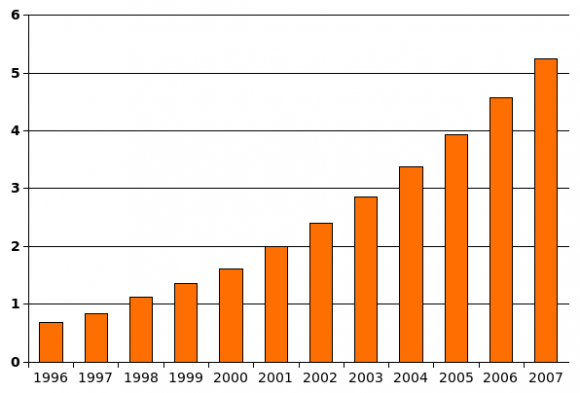 | Karyn Seroussi wrote the book Unraveling the Mystery of Autism and Pervasive Developmental Disorder. You can find her website here with a video at the bottom right. The Autism Research Institute (ARI) website is very informative and has many useful articles. |
Grimm cites a number of brain researchers such as John J. Ratey, MD, who discussed the brain’s center of emotions, otherwise known as the hippocampus, which is part of the limbic system and located in the cerebellum. The hippocampus releases endorphins, which are opioids and opioid peptides that the body itself produces. The limbic system governs emotions, but also intellectual achievement.
Ratey describes the typical autistic characteristic of withdrawing from almost all kinds of physical contact. Since the autistic brain doesn’t engage selectively, it is inundated with stimuli.
An extensive study published in 2002 at the University of California, showed a 270 percent increase in the incidence of autism between 1987 and 1998. It was shown that improved diagnostics did not account for this "growing".
The United States Department of Education reports an increase of 544 percent in the rate of autism between 1992 and 2001.
Unfortunately, other personality disorders are also increasing at an alarming rate. In 2001, the WHO reported that there were 450 million people with psychological disorders and behavior problems. See also the Thomas theorem (p. 37).
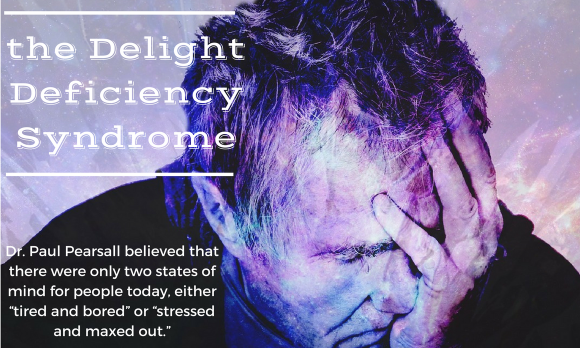
Children suffer from fear and developing aggression.
Andrew Stoll, MD, director of the Pharmacology Research Laboratory at McLean Hospital in Belmont, Massachusetts (see also above), believes that the huge changes in our food have led to the increasing rates of psychiatric illnesses in the Western world.
Doctor and psychotherapist, Dr. Josef Zehentbauer believes that the balance of chemical messengers in the brain determines our personality: Brain chemistry shapes feelings, allows us to experience things like love and hate, aversions and aggressions, dreams and desires, and envy and jealousy. It allows us to move and act, and to remember nice experiences and block out the horrible ones.
Michael A. Crawford believes that our ancestors’ brains weighed between 400 and 500 grams and that this has increased to 1'500 grams over time. He attributes this to the consumption of omega-3 fatty acids in fish, from the freshwater lakes of Africa as well as from rivers and the sea. This is, however, easy to refute. See note.
We don’t need animal sources for omega-3
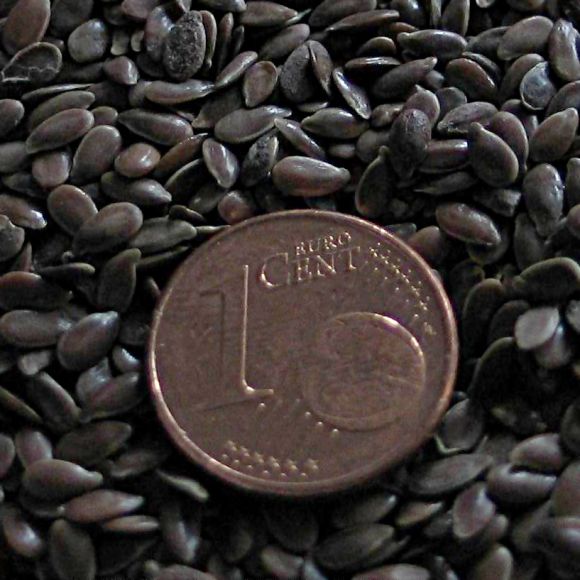 | According to a study published in The Lancet in 1968, Savannah and bush buffalo have the highest content of omega-3 fatty acids, followed by plant sources and lastly fish. We don’t need animal sources for omega-3 fatty acids because many seeds, for example, flaxseed (56–71%) and plants and algae have a far higher omega-3 content than fish or buffalo. |
Food processing turns “good” unsaturated fats into trans fatty acids that cause an increase in LDL-cholesterol in the blood, which in turn causes coronary heart disease. This is what we call industrial fat hardening. There is no mention (yet) of the influence of nutrition on aggression, despite the fact that prominent scientists suggest there is a connection between them.
Omega-3 fatty acids are problematic to the food industry because polyunsaturated fatty acids (PUFA) do not have a long shelf life. Andrew L. Stoll, MD, of Harvard Medical School in Boston, has seen great improvements with simple diet changes, although he doesn’t give evidence of this.
According to brain researcher Dr. Richard J. Davidson of the University of Wisconsin, faulty brain circuitry may underlie at least the impulsive form of aggression. These neural circuits are what regulate our emotions. The brain serotonin system is damaged (p. 43).
The aforementioned author Karyn Seroussi and also Verena Karg from Leimen, Germany, both of whom have children with Asperger’s Syndrome, were able to prove that their children’s conditions were related to the consumption of milk and dairy products. They noticed that milk caused bloated bellies and bad breath and that without milk these symptoms disappeared and the children’s behavior was normal.
Dairy products and gluten worsen the symptoms of autism.
Through a website on autism in children, the women came upon the work of Dr. Karl Reichelt (Norway) (aka. Kalle Ludvig Reichelt), Paul Shattock (England), and Dr. William Shaw, PhD, (US), who had proven what parents had known for 20 years, that dairy products worsen the symptoms of autism
.
Gluten also adversely affects autism patients. Wheat, oats, rye, barley, and especially convenience foods (packaged food, ready-to-eat food) should be avoided (p. 45).
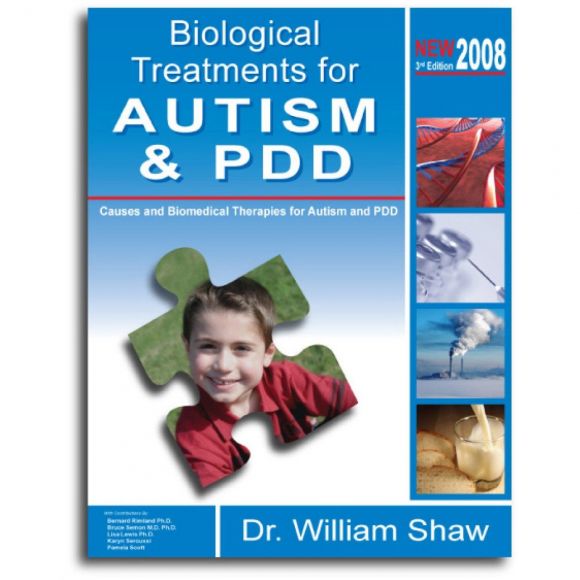 | The Norwegian researcher Dr. Karl Reichelt found opioid peptides in the urine of autistic children and these could be traced back to gluten and casein. (Wikipedia 1991) The book Biological Treatments for Autism and PDD is also available in German as Biologische Behandlung bei Autismus & PDD. |

Information on the subject on Wikipedia, at least as of December 2013, came for the most part from the food industry. I would like to draw attention to a double-blind study in which another neurotransmitter was simply used as the placebo (see more re p. 96 below). Of course, no difference was detected!
We also recommend Die gluten- und kaseinfreie Ernährung für Menschen mit Autismus, ADS/ADHS oder Allergien (The gluten- and casein-free diet for sufferers of Autism, ADD/ADHS, and allergies) written by educational researcher Susanne Strasser.
In the 1960s, Dr. F. Curtis Dohan found a connection between schizophrenia and the consumption of milk and grains. The GFCF diet, a completely gluten- and casein-free diet, has since been gaining popularity, at least in the United States.
The history of research into the seat of the soul and mind
H. U. Grimm discusses the history of research into the seat of the soul and mind (p. 46). Plato (427–347 BCE) regarded the entrails as the seat of significant parts of the soul, (note: the term “intestine” is used today, or in this context gastrointestinal tract would be better), the liver as the seat of the lower passions — such as lusts and greed; the heart as the seat of the higher passions — pride, courage, anger, and fear; and the brain as the seat of the mind.
Galen (130–200 CE) regarded the nerves and brain as the seat of the soul. In the Middle Ages, different chambers of the brain were seen as the location: the front for perceptual assets, imagination, and public spirit; the middle chamber for thinking and judgment; and the last chamber for memory.
Leonardo da Vinci (1452–1519) made perfect anatomical illustrations of the human brain.
René Descartes (1596-1650) thought that the pineal gland was full of “spiritus animalis” (animal spirits) which were very fine winds, or rather very lively flames in the filaments of the nerves.
Isaac Newton (1643–1727) believed the spiritus animalis was vibrations in the nerves.
Neuroscientist and medical historian Dr. Robert-Benjamin Illing of Medical Center — University of Freiburg writes in his book "Vom Loch im Kopf zum Neuron" (From the hole in the head to the neuron) that there was a lot of confusion about the subject even as late as the middle of the eighteenth century.
Emil Du Bois-Reymond (1818–1896) “discovered” in 1843 that there were electrical currents in the nerve tracts.
See note below for Luigi Galvani about this “discovery.”
| Luigi Galvani (1737–1798) demonstrated on November 6, 1780, that frogs who had recently been killed showed muscle contractions when touched with rods of copper and iron. Later he also proved the electrical effect of lightning using earth and ground terminals and his knowledge of Benjamin Franklin’s (1706–1790) lightning rod. In 1792, Alessandro Volta (1745–1827) learned about the frog experiments, and later discovered the battery in 1800, presenting it in 1801 to Napoleon Bonaparte (1769–1821). |
Grimm describes Otto Loewi as a “German chemist.” But as a Jew, Loewi was forced to leave Austria at the age of 65 (Anschluss). He had won the Nobel Prize together with Henry Dale in 1936 and was forced to transfer his prize money into a Nazi bank account.
Dale discovered the hormone "oxytoc.." in the pituitary gland (hypophysis) in 1906.
German pharmacologist Otto Loewi (1873–1961) discovered a new substance that was excreted from his body after he had taken drugs.
Henry Hallet Dale (1875–1968) later identified this chemical as the neurotransmitter acetylcholin (AHc).
In his book "Körpereigene Drogen, die ungenutzten Fähigkeiten unseres Gehirns" (The body’s own drugs — the brain’s unused powers), Dr. Josef Zehentbauer (MD) demonstrates how every thought and every feeling is carried by a specific combination of neurotransmitters
.
Zehentbauer incidentally has written about a dozen books, the most famous of them "Die Seele zerstören – Neuroleptika – der verheimlichte Arzneimittelskandal" (Destroying the mind — antipsychotics — the drug scandal cover-up).
Experts believe that autism is a very particular form of food intolerance. Peptides cause problems in the brain and cause an almost addictive craving for the harmful substances
(p. 49). The food intolerance in turn can be explained by leaky gut syndrome.
Grimm lists convenience foods such as mashed potatoes sold by the companies Pfanni and Maggi as culprits. He advises that we not only avoid dairy products and gluten, but also all food additives that are harmful to the gut.
GFCF (gluten-free casein-free diet) - positive results
Dr. James Robert Cade of the University of Florida notice a remarkable improvement in 81 percent of children he treats who are put on a GFCF diet (gluten-free, casein-free). This has also been confirmed by Finnish nutrition researcher Teuvo Rantala, despite having been skeptical at first, as he admitted to New Scientist.
Parents of autistic children, Martina Siesing from Magdeburg, Germany, Verena Karg, and Sylvia Gottstein, both from Leimen, Germany, each have their own success stories (p. 51).
See also the website gfcfdiet.com.
The Kalveness family from Moss in Norway brought their son to Dr. Reichelt and saw positive results after only three months with the GFCF diet. The Seroussi family eliminated all symptoms of autism in their son by excluding convenience foods from his diet (p. 53).
2.3. High as the Sky — Glutamate
The author sees the flavor enhancer glutamate as especially harmful, calling it the flavor that can kill brain cells
. He quotes the renowned and highly distinguished scientist Professor Konrad Beyreuther (born 1941, promoted to professor in the area of genetics): Glutamate is a neurotoxin
, and an overstimulation of glutamate receptors is a critical indicator in all neurodegenerative diseases
(p. 28).
It has been proven that the artificial sweetener (sugar substitute) aspartame (E 951) has similar effects to glutamate. Beyreuther carried out tests using the drug LSD (lysergic acid diethylamide) to show how quickly the brain is affected.
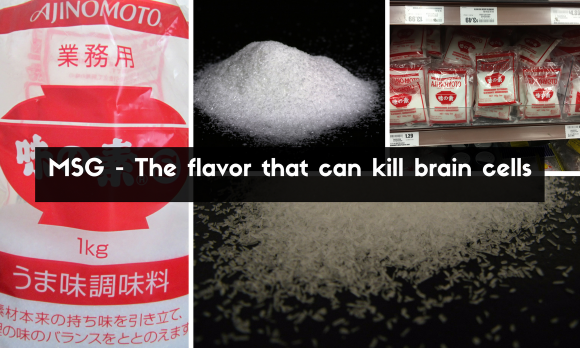
The risks and uses of glutamate as a food additiv
The type of glutamate we are discussing is called monosodium glutamate (MSG).
Note: 20 µg is considered the normal threshold dose.
Andrea Eid discusses the risks and uses of glutamate as a food additive in her thesis "Glutamat als Zusatzstoff in Lebensmitteln –Nutzen und Risiken" (Glutamate as a food additive — uses and risks) (Grin Verlag, 2009). She discusses proven side effects of glutamate and explains how the food industry gets around the duty of declaration regarding the additive.
Grimm lists the possible side effects of consuming glutamate such as cluster headaches (p.57). Some substances were not known to be neurotoxic (neurotoxin) at the time of approval.
Wikipedia lists the following additional substances as neurotoxins: alcohol, "atropi..", "botulin.. toxin", caffeine, and nicotine. Despite the fact that glutamate causes obesity and other diseases, 1.5 million tons of the additive was produced by the food industry in 2003 — with an increasing tendency. Glutamate is a white powder, and is also available as such.
In Japan, the word umami denotes the quintessence of savory food.
Umami
 | Umami (Japan: うま味– in general: 旨味, in China: 鮮味 in simple Chinese: 鲜味) |
Those in the food business love monosodium glutamate, which is also known with the molecular formula C5H8NNaO4. If you eat in canteens or in restaurants, chances are you’ll be eating glutamate
(p. 58).
Grimm says, You can’t avoid glutamate if you like to buy convenience foods and other treats from the supermarket.
Even the word “flavor” alone may be used on labels of products that contain up to 30% glutamate content.
Other hidden sources of glutamate and restless legs syndrome
Other hidden sources of glutamate are carrageenan, maltodextrin, wheat protein (gluten), and dried milk (powdered milk) products.
The German organic food giant Rapunzel camouflages glutamate in its soup cubes as yeast extract. Their clear soup contains 2.7% glutamate, while their “low salt” broth cubes contain as much as 4.9%. Their vegetable soup package contains the slogan no artificial flavor enhancers
(p. 59)!
Glutamate occurs naturally in some foods such as cheese, beans, tomatoes, and breast milk. It is also naturally present in the body.
Glutamate plays a vital role in pain modulation, in controlling "bodygrowth" and appetite, in regulating body weight, and even in reproduction. Glutamate is one of the most important chemical messengers in the hypothalamus, the body’s control center deep inside the head.
This has only been known scientifically since 1990, although glutamate has been allowed as an additive since 1959 under the designation Generally Recognized As Safe
(GRAS) (p. 60).
See also "glutamateflavoring".
| From Wikipedia (German): "A study with 28 RLS patients carried out at Johns Hopkins University, Baltimore, (JHU), showed a relationship between the treatment of RLS and insomnia and the cerebral metabolism of the neurotransmitters "dopami..* and glutamate." |
Treatment of the RLS patients with dopaminergic agents (drugs that increase "dopami..") improved the RLS symptoms, but not the often accompanying insomnia. In a comparative study with 20 healthy people, results showed unusually high levels of glutamate in the thalamus of the RLS patients. There was a correlation between the level of glutamate in the thalamus and the quality of sleep. Specialists at JHU concluded that overstimulation of the thalamus triggered by glutamate is the cause of insomnia.
Glutamic acid was first isolated from wheat gluten in 1866 by German chemist Karl Heinrich Leopold Ritthausen. In 1908, Japanese chemist Kikunae Ikeda discovered why his tofu tasted much better with a spoonful of seaweed broth than in its natural form. And a year later, the Japanese food and chemical corporation Ajinomoto started manufacturing monosodium glutamate.
The history of MSG
During the war, U.S. quartermasters noticed that the rations of captured Japanese soldiers tasted delicious.
After the war, the U.S. food industry started adding monosodium glutamate to industrial foods in order to increase turnover. Originally, the industry produced glutamic acid by culturing the bacteria Corynebacterium glutamicum from the Japanese kelp Saccharina japonica, also called Laminoria japonica. This bacteria also occurs in the sea vegetable kombu (p.65).
Today, the biotechnology industry uses mutations of the bacteria.
In 1976, production worldwide reached 262'000 tons, and this increased to 1.5 million tons by 2003.
Just as there are studies that highlight the dangers of glutamate in food, there are also studies that aim to disprove these. The food industry has a huge stake in the matter, and the last thing they want is that the harmful effects of glutamate be recognized by regulatory authorities and policymakers. The best strategy in this case is to hire renowned scientists to prove that it is harmless.
H.U. Grimm points out how this is done and shows how statistics can be manipulated to prove something that isn’t true.
How statistics can be manipulated to prove something that isn’t true and conferences on controversial scientific topics
This information isn’t succinct unfortunately, but is spread over different chapters on pages 28, 69, 75, 83, and 91–97.
It is done using what is called a double-blind study (double-blind trial), which is better than a blind study (blind experiment) and is actually the easiest way for researchers to demonstrate a particular view. See also randomized controlled trial.
One case in point is how food giant Nestlé points to the 1996 Hohenheimer Consensus Conference, organized by German nutrition scientist Konrad Biesalski, in order to justify its use of monosodium glutamate (p. 68). Biesalski did however admit that drastic increases in levels of glutamate in the body can cause excessive sustained activation of glutamate receptors which can kill neurons
(p. 75).
The global leader Ajinomoto also used and paid Biesalski to furnish the relevant certification for glutamate needed in order to comply with German food regulations
(p. 83).
Professor Biesalski runs these independent consensus conferences on controversial scientific topics on behalf of interested parties. Conference participants author and present consensus papers, which are then accepted as established scientific doctrine.
The 1996 conference on glutamate had papers from the following specialists besides Biesalski himself:
- Professor Karl-Heinz Bässler (Mainz),
- Johannes Friedrich Diehl (former Director of the Karlsruher Bundesforschungsangestalt für Ernährung [German Federal Research Center for Nutrition in Karlsruhe),
- food scientist Helmut F. Erbersdobler, of Kiel,
- Peter Fürst and Walter Hammes of the University Hohenheim,
- Mainz neuroscientist Oliver Kempski,
- and Hans Steinhart of the Universität Hamburg.
Biesalski insists the participating scientists were not paid (p.92).
The conference was commissioned by the “Glutamat-Informationsdienst” (an information service about glutamate) based in the town Kronberg im Taunus in Germany, via a PR agency, and paid for by global giant Ajinomoto, which has a glutamate turnover of €10 billion. (This represents 30 % of the worldwide production of 1.5 million tons of glutamate.) And this does not include Ajinomoto’s trade in sweeteners, additives, and convenience foods (p. 93).
There are three chemical substances which produce “umami.” These are monosodium glutamate (MSG), disodium inosinate (IMP), and disodium gluanylate (GMP).
MSG is the simplest way to add umami, the fifth taste, to food. Only certain animals have umami receptors. Seaweed contains the highest amount of MSG. It is important to distinguish between free and bound MSG.
If you eat glutamate together with, or after, rice, the negative side effects associated with consuming MSG are not felt. This is why the Japanese and Chinese eat soup after eating rice.

| "As a general rule, all types of convenience foods contain MSG. There are particularly large amounts of it in frozen foods, savory munchies, spice blends, canned and packaged soup, powdered sauces, and sausage and ham." |
Recommended Reading
When you read the Wikipedia entry about glutamate intolerance, it is easy to see whose interests are being promoted.
Knorr foods and the beverage manufacturer Calpis are owned by Unilever, at least in Japan, and licensed in Japan to food giant Ajinomoto.
- In 1997, Konrad Biesalski published the article “Na-Glutamat, eine Standortbestimmung” (Sodium glutamate, an analysis of the position) in the journal Aktuelle Ernährungs-Medizin (Current issues in nutritional medicine) (22: pp. 169–178),
- In 1998 “Zur Bedeutung von Glutamat in der Ernährung” (On the importance of glutamate in food) in the journal Ernährungs-Umschau (Survey of nutrition) (edition 45, 7).
- I highly recommend the "Pocket Atlas of Nutrition", written by H. K. Biesalski and Peter Grimm and published by Thieme Medical Publishers.
2.4. The Sweet Club
Starting on page 79, Grimm discusses money and power, and how the food industry deals with criticism. He focuses here, in particular, on the views of scientist and toxicologist Dr. Hermann Kruse of Kiel University in Germany.

You can also watch a YouTube video from Kruse on the topic called "Desinformation als Prinzip" (Misinformation as a principle, from December 12, 2012, in German only) and a video in which he discusses the problems with other food additives such as acrylamide.
A further topic discussed is how the sweetener aspartame can cause side effects such as headaches, dizziness, and short-term memory loss. Like glutamate, aspartame attacks the brain’s control center. Aspartame-containing products include Equal and Canderel, both manufactured by The NutraSweet Company (p. 82).
In the case of aspartame, it was determined that the industry had submitted fake information to the FDA
In 1997, Florida author Hyram J. Roberts, MD, (deceased Feb. 25, 2013, aka Hiram, author of Aspartame (NutraSweet): Is it Safe?) summarized his research of over two decades as follows:
If the general public doesn’t stop using aspartame products immediately, I am of the opinion that our society will be faced by an unavoidable catastrophe.
John W. Olney, MD, of Washington University, St. Louis, Missouri, testified that the data provided by the industry, on which the FDA based its approval of certain foods, often proved on further examination to be faulty, unreliable, or even totally false. In the case of aspartame, it was determined that the industry had submitted manipulated information — fake information — to the FDA (p. 83).
Researchers have pointed to the fact that this has also occurred in the case of glutamate. Both substances are neurotransmitters that can potentially act as neurotoxins. They are particularly harmful to children.
Grimm also reports on studies carried out by neuropsychologist Dr. Paul A. Spiers of Beth Israel Deaconess Medical Center (BIDMC) in Boston. BIDMC is a teaching hospital of Harvard Medical School.
The author also tells of a patient of H. J. Roberts, MD, (see above) who suffered from headaches, depression, memory loss, lethargy, and irritability. The symptoms disappeared one day after the patient discontinued her previous high consumption of aspartame and Diet Coke. This is only one of 1'300 cases collected by Spiers.
Confusingly, some products which contain aspartame have the label contains a source of phenylalanine
. People who suffer from phenylketonuria (PKU), a relatively common genetic metabolic disorder (1:10'000 in the U.S.), can experience delays in physical and emotional development if they eat such foods that contain too much phenylalanine. If they don’t follow a strict low-protein diet, this can lead to quite serious health problems. See also phenylpyruvic acid.
Retired neurosurgeon Dr. Russell L. Blaylock believes that very high levels of aspartame can even cause epileptic seizures and schizophrenia. Many aviation and Navy magazines have published articles warning pilots of the dangers of aspartame in the cockpit, and over 600 pilots have reported such symptoms. The NutraSweet Company attempted to ban John W. Olney’s findings (p.88). Despite evidence to the contrary, Friedrich K. Trefz, MD, of the University of Tübingen, Germany, managed to pronounce aspartame as harmless and testified that it is one of the best researched additives on the market.
More fake studies about aspartame
One consensus paper written by nutrition scientist Konrad Biesalski (see above) was enough to convince people of the safety of glutamate.
Biesalski is also founder of the food research, prevention, and therapy center "Science Forschungszentrum in Ernährung und Prävention und Therapie GmbH" (Science research center in nutrition and prevention and treatment, FEP) in Esslingen, Germany. His wife is the director of the company. Their company brochure describes the company as an innovative service provider
that sells science in clear terms
. It lauds its cooperation with the "Institute of Biological Chemistry and Nutrition" at the University of Hohenheim, whose director, take note, is Professor Biesalski himself.
And then there is the associated company "Forschungszentrum für Ernährung in Prävention und Therapie Hohenheim GmbH" (also a center for research, prevention, and treatment), which is a spin-off and whose director is also Biesalski. The company naturally highlights the fact that it provides media-friendly consensus papers that, according to the company’s logic, tie in with its marketing activities.
These papers are of course just as scientific as the double-blind and blind studies using aspartame (similar effect) instead of placebos that are mentioned above.
A further faked study, carried out as part of an official U.S. investigation, questioned 3'222 people on the adverse effects of glutamate and resulted in only 1.8 % of respondents reporting to have suffered adverse effects. The creators of the survey focused solely on the symptoms of “burning,” “tightness,” and “numbness.”
However, a further 41.2 % of participants complained of having the following MSG-induced adverse reactions: chest pains, dizziness, headaches, palpitations, weakness, vomiting/nausea, abdominal cramps, chills, diarrhea, heartburn, unusual thirst, unusual perspiration, flushing sensation in chest or face, nervous tingling, seizures, tachycardia, skin rashes, and/or depression.
Numerous other studies exonerating glutamate have been carried out with the active participation of companies like Ajinomoto, Gerber Products Company, Nestlé, and the International Glutamate Technical Committee (IGTC). Susan Schiffman of Duke University Medical School, who presented a paper at the Hohenheimer Consensus Conference, had her research partly financed by Monsanto, former NutraSweet mother company (p.97).
NutraSweet brought a law suit against toxicologist Dr. Hermann Kruse of Kiel University, who had spoken on ZDF (German television channel) about his views on aspartame and glutamate.
The judges discussed symptoms such as headaches, which according to Dr. Friedrich Schweinsberg, University of Tübingen, were ‘significantly more frequent’ among those who were given only 15 mg per pound of body weight. According to Susan Schiffman, ‘no connection’ between the symptoms and aspartame could be determined” (p.101).
Herman Kruse was acquitted. He took on the task of analyzing the results of 166 studies on aspartame published since 1976. Eighty-three of these tests have classified aspartame as problematic for one reason or another (p. 101).
Studies financed by interested parties are not a priori bad, but what happens is that the client can misuse or hide negative results.
Grimm reports that British researcher Erik Millstone, after having read thousands of pages of such official papers, stated the following: Laboratory tests were faked and dangers often concealed
. Millstone added, False and misleading statements were made to the FDA.
How aspartame was approved is a lesson in how chemical and pharmaceutical companies can manipulate government agencies, bribe organizations, and flood the scientific community with flawed and fraudulent studies
, says aspartame critic Mark D. Gold.
FDA scientist Jacqueline Verrett goes so far as to call it a disaster. The Bressler-Report, named after former head of the FDA investigative task force Jerome Bressler, presents some of the flaws and frauds that were submitted to the FDA and led to the successful approval of aspartame.
The main points of the report
Grimm highlights the main points of the report and also describes how former actor and U.S. president Ronald Reagan simply fired the then head of the FDA and hired Arthur Hull Hayes because the approval of aspartame had been delayed for years.
When a new application was made to approve aspartame, Arthur Hull Hayes Jr. appointed a five-member scientific commission to review the board of inquiry’s decision. It soon became clear that the panel would uphold the ban by a 3-2 decision, so Hayes installed a sixth member on the Commission, but the vote became deadlocked. Hyes then personally broke the tie in aspartame’s favor. In 1981 aspartame was approved by the FDA for use in dry foods and later in 1983 in drinks.
Hyes later left the FDA and took a position with Burson-Marsteller, the chief public relations firm for NutraSweet/Monsanto (p. 100).
2.5. Next to Nothing
In this chapter, the author discusses powdered baby formula and children going to school on an empty stomach. According to researcher Stig Bengmark, MD, PhD, babies fed baby formula have on average an IQ (intelligence quotient) that is 10 % lower than those who are breast-fed.
The author shows that baby food in jars, for example, pureed carrot, potato, and beef mixtures, are deficient in iron, fat, and vitamins. The author gives reasons and compares foods. He also shows that children who go to school on an empty stomach perform comparatively worse.
Industrially produced baby food in jars is nothing other than preserved food
Dr. Antal Bognár, director of the Institute of Chemistry and Biology at the Max Rubner Institute, Federal Research Institute of Nutrition and Food in Karlsruhe, believes that industrially produced baby food in jars is nothing other than preserved food.
He gives reasons why the contents don’t meet the necessary nutritional requirements.
Dr. Michael Nelson, researcher and lecturer in nutrition at King’s College London, carried out a study in which 164 teenagers developed lower IQ levels while on a diet. Nelson showed how this was caused by low levels of iron, which is needed to carry oxygen to the body’s cells.
Grimm also discusses how the regular consumption of fast food puts the health of children and teenagers at risk. This happens because these foods contain high levels of phosphate, which binds with zinc, interfering with its absorption in the body.
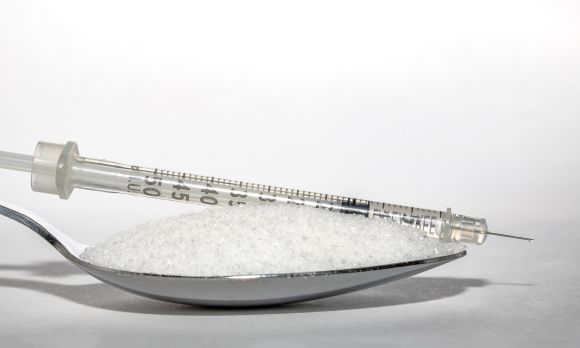
Grimm quotes U.S. author Kenneth Giuffre, who is especially critical of the way products such as cola, sweetened drinks, and chocolate bars cause spikes in blood glucose levels. They cause a short-lived improvement in concentration, alertness, and lucidity. However, as the level of serotonin rises this is soon replaced by sleepiness, lethargy, and decreased memory recall.
The author also discusses how these products are addictive and how they activate the same areas of the brain that are activated in drug use.
The spikes in blood glucose level
According to a study carried out by Harvard University, and published in The Lancet in 2001, children in western Europe consume 50 kg of sugar per year. Much too much, though not (yet?) near as much as the 146 kg consumed in the United States (p. 113).

It is a known fact that consuming soft drinks over a long period can lead to diabetes.
The spikes in blood glucose level (see text above) can be interpreted either as a positive or a negative thing, depending on the interests of those presenting the statistics. For example, if the focus lies solely on the increase in alertness and productivity after drinking cola, the spikes can be shown to be a positive result.
It is, as such, easy to see that the public can’t come to any conclusions based on such study results, without having background information such as the reason why the statistics were compiled, how the results were put together, and the kind of placebo used. Interested parties pick out the statistics that give a positive view of their product and present these, and only these, in order to serve their own interests.
This is the norm, at least outside of science — although it unfortunately happens there as well.
Citric acid (E330) is also discussed by the author, who shows how it attacks not only the teeth, but also the brain.
Citric acid is used in unnaturally large quantities by the food industry to conserve and homogenize food, and also as an acidifier. It is only in these quantities that it is harmful.
Aspartame
The author then returns to aspartame, naming the foods in which it is found and describing how it affects the hypothalamus.
These symptoms usually appear much later in life. Other adverse effects are obesity, skeletal anomalies, and reproductive problems.
Both aspartame and citric acid have been shown to curb the uptake of the brain fuel glucose. It is therefore very important that children receive a nutritious breakfast of whole foods before school.
2.6. More Than Scary
The subtitle of this chapter translates as “Children on Drugs — the "R-Experiment".”
"Rita.." is a trading name for "methylphenida..", which is an amphetamine.
"R-Nation"
According to the German federal Opium Agency (BOPST within BfArM), there was a 14-fold increase in the number of children taking "Rita.." between 1993 and 2000. An official hearing was called in the U.S. with Gene R. Haislip of the DEA because 10 % of American children were on "Rita..", and in some areas as many as 20 % (p. 124).
In his book, "R-Nation", Richard DeGrandpre describes over two dozen headline-making cases related to health problems, deaths, and criminal dealings involving "Rita..".
However, according to Andreas Warnke (1946–2015), former director of the Klinik und Poliklinik für Kinder- und Jugendpsychiatrie (Clinic and polyclinic for child and adolescent psychiatry) at the University of Würzburg, Germany, there is no known evidence of harmful illnesses resulting from "Rita.." intake. He describes how the package insert for "Rita.." produced by the company Novartis directly addresses children (p. 125).
Grimm tells us how parents who try to prevent their children from being prescribed "Rita.." come up against problems — a sign of how effectively the drug is marketed. In this context, he provides two startling examples, but unfortunately, he doesn’t cite a specific source here; instead, he only provides a reference to the Times Union newspaper in Albany, New York.
He also describes how the same set of conditions is given different names in different countries:
- in Germany and Austria, the term used is Minimal Cerebral Dysfunction (MCD),
- in Switzerland it is early-childhood Psycho-Organic Syndrome (POS),
- and in the U.S. and U.K. it is Minimal Brain Dysfunction (MBD).
Based on a book on ADS by Elisabeth Aust-Claus and Petra-Marina Hammer called "Das ADS-Buch", (The ADS book, 1999), Grimm very clearly shows the effect such conditions have on children.
Attention deficit hyperactivity disorder (ADHD) / attention deficit disorder (ADD) / hyperkinetic syndrome (HKS)
The following excerpt is taken from the Wikipedia entry attention deficit hyperactivity disorder (ADHD), also known as attention deficit disorder (ADD) and hyperkinetic syndrome (HKS):
ADHD, similar to hyperkinetic disorder, is a psychiatric disorder of the neurodevelopmental type in which there are significant problems of attention, hyperactivity, or acting impulsively that are not appropriate for a person's age. These symptoms must begin by age six to twelve and persist for more than six months for a diagnosis to be made. In school-aged individuals inattention symptoms often result in poor school performance. It is a psychiatric disorder which develops in childhood and is characterized by inattention, impulsivity, and hyperactivity.
Despite being the most commonly studied and diagnosed psychiatric disorder in children and adolescents, the cause in the majority of cases is unknown. It affects about 6–7 % of children when diagnosed via the DSM-IV criteria and 1–2 % when diagnosed via the ICD-10 criteria. Rates are similar between countries and depend mostly on how it is diagnosed. ADHD is diagnosed approximately three times more in boys than in girls. About 30–50 % of people diagnosed in childhood continue to have symptoms into adulthood and between 2–5 % of adults have the condition. The condition can be difficult to tell apart from other disorders as well as that of high normal activity.
ADHD management usually involves some combination of counseling, lifestyle changes, and medications. Medications are only recommended as a first-line treatment in children who have severe symptoms and may be considered for those with moderate symptoms who either refuse or fail to improve with counseling. Long-term effects of medications are not clear and they are not recommended in preschool-aged children. Adolescents and adults tend to develop coping skills which make up for some or all of their impairments.
ADHD, its diagnosis, and its treatment have been considered controversial since the 1970s. The controversies have involved clinicians, teachers, policymakers, parents, and the media.
There are a number of names and abbreviations for the disorder, sometimes showing the same set of conditions, and sometimes showing special conditions. The term ADD is very widely used and often used as slang for patients who have the inattentive sub-type of the disorder. This sub-type has not been sufficiently scientifically researched. The terms MCD and POS are outdated. The most commonly used terms internationally are ADHD and ADD.
The term ADHD is currently used (2009) to describe a disorder which can be caused by a number of factors including genetic inheritance. Psychosocial and environmental factors, for example, the classroom environment, influence the severity and individual characteristics of the disorder. There are many possible biological causes of ADHD but no one model to fit all sufferers of the disorder.
Grimm explains how small amounts of any drug can have positive effects in the initial stages. However, he emphasizes that negative side effects are usually experienced when larger doses are taken. He mentions several artists as examples, including the author Ernest Hemingway, who experimented with drugs to escape to another world.
Grimm tells us how the Absinthe Murders of 1905 (by Jean Lanfray) led to the drink being banned. In 1998 the drink, also known as the green fairy
, was reapproved in the EU, and in 2005, Swiss policymakers thought they should follow suit. The authorities are well aware of the fact that absinthe can cause physical and mental harm, as noted in the Frankfurter Allgemeine Zeitung (FAZ).
Absinthe
Absinthe is a highly concentrated alcoholic beverage with an alcohol level of 45 to 90 percent. It is usually taken diluted with water. Absinthe also contains wormwood (Artemisia absinthium), anise, fennel, and other herbs. Thujone is the active component of the essential oils found in wormwood.
At the height of its popularity in the nineteenth century, the following adverse effects were common: dizziness, hallucinations, delusions, depression/despair, cramps, and blindness, as well as other mental and physical problems.
Studies suggested that the thujone was responsible for these, but low quality and the methanol also played a role.
Grimm also explains how drugs like ecstasy (MDMA), heroin (street names: H, smack, boy, horse, brown, black, tar, and others), and cannabis (marijuana) were first used as medicines.
In the nineteenth century, Bayer AG sold heroin legally as a cough suppressant. It wasn’t until addictive properties (substance dependence) were evidenced that policymakers were prompted to ban certain drugs — or to tax them highly.
Only the child is no longer a child, but rather an adolescent who has emotionally remained on the level of a child. Grimm gives examples to support his claim.
He lists the possible psychological changes and the increased risk of Parkinson’s disease later in life, as was hypothesized by Göttingen neurobiologist Gerald Hüther.
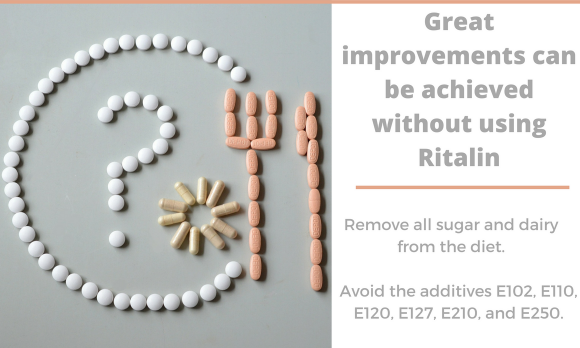
He then discusses the case of Vreni Kälin, who on the recommendation of a Swiss working group on food and behavior, Arbeitskreis Ernährung und Verhalten (AEV), removed all sugar and dairy from her child’s diet. She achieved great improvements without using "Rita..". This is in line with numerous scientific studies showing how food affects the behavior of hyperactive children.
A new food plan for the school children
Grimm also gives the example of a British school director, Gordon Walker, of Tywardreath Primary School in St. Austell, who designed a new food plan for the school children together with parents.
Note: The AEV, which was formerly based in Zurich, doesn’t exist anymore, nor does its website. This group of around 300 Swiss families with hyperactive children fulfilled its purpose. See also somatic psychology.
2.7. Straight from the Can
In this chapter we learn of the correlation between how our eating habits have changed and the alarming increase in illnesses such as Alzheimer’s. According to Edward Trischke, president of the Alzheimer’s Association (U.S.) (alz.org), We have an imminent worldwide epidemic
.
Alzheimer’s and How Food Destroys the Brain
The chapter subtitle reads Alzheimer’s and How Food Destroys the Brain
. As the saying goes, we are what we eat.
Other diseases related to Alzheimer’s are Parkinson’s disease (PD), multiple sclerosis (MS), and amyotrophic lateral sclerosis (ALS, Lou Gehring’s disease, Charcot disease). The famous physicist and astrophysicist Stephan Hawking suffers from ALS.
In 2001, U.S. researcher Hugh Hendrie of Indiana University studied two similar groups of people with different eating habits and found that twice as many people in one group developed Alzheimer’s than the other group. Other factors came into play as well. However, the study involved people from rural areas, without the pressures of urban life, in order to minimize such other factors.
Several risk factors were determined for the disease, but the most significant one was diet. Luckily we can control this factor ourselves.
Scientists see the metal food additive or coloring E173 (used in certain cheese rinds, for example) as a large risk factor, as well as aluminum compounds found in additives E520 to E559.
Aluminium accumulation in the brain and citritc acid, glutamate and aspartame
The very common food additive citric acid causes aluminum accumulation in the brain. Despite this fact, the food industry uses fungus to create 600'000 tons of citric acid annually. According to brain researcher Dr. Konrad Beyreuther (see above), aluminum cannot be removed from the brain once it gets there.
Both the flavor enhancer glutamate and sweetener aspartame also cause aluminum compounds to cross the blood-brain barrier and enter the brain (p. 153).
U.S. author Jean Carper believes glutamate is a serial killer of cells.
Glutamate critic Russell L. Blaylock said, in relation to the drug "Memanti..", which is used as a glutamate blocker in the treatment of Alzheimer’s:
I consider it ironic that the pharmaceutical industry is investing vast resources in the development of glutamate receptor blockers, while at the same time, the food industry continues to add great quantities of glutamate to the food supply.
GRIMM turns to sugar, and informs us that too much sugar also harms the brain. The author returns to Dr. Beyreuther, who believes that the "insulinsystem" of Alzheimer’s sufferers is overburdened, a fact that has been scientifically proven.
Deficiency in certain vitamins can cause mental deterioration. In the case of Alzheimer’s, the instrumental vitamins are A, C, and E, while a vitamin D deficiency is prevalent in patients with MS. Vitamins keep the brain, which is made of 60 % fat, healthy.
Sugar, vitamins and fats
Sugar is harmless in natural amounts and is actually needed by the body to create energy in the form of glucose for the brain. The amount of sugar in the blood is measured as the blood glucose level (blood sugar).
Deficiency in certain vitamins can cause mental deterioration. A diet of natural, vitamin-rich foods is what is needed to prevent this, and not vitamin supplements.
Many researchers, including brain-food specialist Jean Carper (see above) see polyunsaturated fats as important for the brain. U.S. scientist, Andrew Stroll demonstrates the correlation between good and bad fats. He sees a connection between a deficiency in highly unsaturated fatty acids and depression and other psychological disorders.
2.8. Red Hot Ears
In this chapter we learn about food, the psyche, and the power of feelings.
The story of Phineas Gage
We hear about the American construction foreman Phineas Gage, who in a rock-blasting accident in September 1848 had a large iron rod driven completely through his head. The rod hit him at great speed in the left cheek, shot through the base of his skull and the front of his brain, and exited through the skullcap. The feeling or emotional center of his brain was destroyed. But feelings are necessary for a healthy life with a socially developed personality.
Brain researcher Antonio R. Damasio believes that feelings are an integral part of the mind mechanism and the basis for our consciousness. For Damasio, Phineas Gage was proof that feelings have a material basis. Gage was missing the substance of which emotions are made, and in its place was a hole (p. 165).
The case of Phineas Gage proves how important feelings are.
More recent studies show that without feelings, the mind cannot exist.
Antonio R. Damasio believes that the body and brain form an indissociable organism and that consciousness is body-related.
Evidence of this can be found in studies which show that the brains of Vietnam veterans had shrunk. Similar changes occur in victims of sexual abuse.
A group of writers led by neurobiologist Dr. Gerald Hüther believes that many people can assess the varying effects individual foods have, especially if they bring about bad moods. Foods too, and not only drugs can have psychotropic effects.
It is possible to be psychologically dependent on food. Women are often addicted to chocolate.
The behavior of cocaine addicts is similar to that of chocoholics
One survey showed that 50 percent of women found chocolate to be more important than sex. The behavior of cocaine addicts is similar to that of chocoholics.

Naturally the food industry makes sure that only the positive aspects of chocolate are publicized.

The Wikipedia entry on chocolate cites mostly insignificant examples of negative effects and does not explain the real problems it can cause. The entry nonetheless comes across as balanced.
Newspapers and magazines often stylize the positive aspects of chocolate. This is understandable as PR contracts from important clients are usually involved.
The PR companies are bound by a certain volume of adverts with certain conditions and prices. This is how consumer magazines in particular are supported.
Grimm names the different substances and chemical messengers for the basic emotions of joy, sadness, and anger. The author puts the difference between "testosteronelevels" in men and women on a scale of one to ten. As little as six parts in a billion per milliliter of blood cause significant behavioral changes. The "testosteronelevel" can be changed by eating certain foods.
Substances, chemical messengers and basic emotions
Seven grams of licorice per day, for example, will cause a drop of 50 percent in "testostero.." after the fourth day.
Grimm explains the results of a British study which found that obese people had 30 percent less sex hormones than people of normal weight. Sport activates the pleasure pathogens. Caressing increases levels of the love hormone "oxytoc..", which plays an important role in childbirth and orgasm (p. 170).
Marco Rauland, author of "Chemie der Gefühle", (The chemistry of feelings), believes that even factual information contains a grain of feeling.
These feelings affect the way the information is remembered. The happy hormone serotonin plays an important role here.
The human body contains only 10 milligrams of serotonin, only one percent of which is in the brain, amounting to only about one hundred millionth of a gram. The remaining 90 percent of the neurotransmitter is found in the gut! Too much serotonin in the brain would kill a person because happiness indicators also control the pulse and heartbeat (p. 174).
Grimm explains how sunlight and coffee stimulate the production of serotonin, fasting activates it, and alcohol inhibits the breakdown of serotonin. He shows how bananas and muesli improve mood, as the carbohydrates are digested slowly.
Medical scientist Françoise Wilhelmi de Toledo, head of research at Buchinger Klinik in Überlingen, Germany, believes that fats are the ultimate feel-good foods. The omega-3 fatty acids cause a feeling of well-being in the brain because they raise the level of the chemical messengers "dopami..", norepinephrine, and epinephrine (adrelanine). They also increase serotonin receptor binding
(p. 175).
The different views held in the field of brain research
The author then discusses the different views held in the field of brain research.
He mentions science writer Rolf Degen who repudiates the core assumptions of Sigmund Freud’s theories, despite the fact that modern brain research endorses Freud’s work.
He also discusses U.S. psychologist Daniel Jay Goleman, and his book "Emotional Intelligence" (1995), as well as neurologist Gerhard Roth. GRIMM focuses especially on the high success rates of flaxseed oil (linseed oil) in brain health as researched by neuroscientist Andrew L. Stoll, director of McLean Hospital Psychopharmacology Research Laboratory, Belmont, highlighting the importance of a healthy diet.
See Stoll’s "The Omega-3 Connection" (2001).
The author refers to neuropathy and discusses several cases, one of which is believed to have been caused by an antibiotic, and other cases reported to have been caused by excessive vitamin B6 intake. This group of nerve conditions that impairs body awareness is still very much overlooked. According to neurologist Oliver Sacks, body awareness forms the basis of the self and is the basis of the faculty of judgement.
2.9. Organ of the Year
In this chapter "The Brain in the Gut — How the Gut Has a Mind of Its Own", the author explains what is behind such colloquialisms as “to have butterflies in your stomach” and “to have a gut feeling.”
The Second Brain — Your Gut Has a Mind of Its Own
Michael D. Gershon, former Chairman of the Department of Anatomy and Cell Biology at Columbia University, New York, who published his findings on the enteric nervous system in 1981, met with much hostility over many years, until his research results about the “brain in the gut” were confirmed. His findings were subsequently published in his book, "The Second Brain — Your Gut Has a Mind of Its Own" (1999).
Gershon and other researchers have shown that the gut, (intestinal or belly brain), which has the same neurons as are in the brain, 100 million of them at that, has decision-making powers.
It is amazing that the gut was first seen by scientists as a tube with simple reflexes
. It is only now, slowly, being seen as a significant organ. It makes the heart seem like a replaceable pump — almost untransplantable as it is.
The gut is the major defense organ of the immune system. As its surface is 250 to 400 square meters, it is considered to have the most contact with the outside world. Its surface area is more than twice that of the lungs, and one hundred times that of the skin.
In Germany alone over 30'000 people die of colon cancer each year because of poor diet and lifestyle habits. This disease can actually be cured if detected early.
Grimm reveals many ways in which the gut affects our happiness and unhappiness. He points out that there are 500 different species of bacteria in the gut (note: more accurately the intestines) making up a total of 100 trillion bacterial cells. They weigh about three pounds and process our food. The gut organizes killer cells when needed, to destroy invading cells.
The author discusses the large number of more than 40 chemical messengers that affect the human body, including glutamate, "dopami..", norepinephrine, naturally occurring opiates, and benzodiazepines.
New research shows that when the gut is overburdened with too many foreign substances, it can be the cause of illnesses such as Autism, Alzheimer’s, Parkinson’s, and multiple sclerosis, and not the brain. The gut is also seen as one of the reasons that changes in the body and mind take place.
The leaky gut syndrome
The gastrointestinal tract, or gut, processes 30 to 100 tons of food, depending on the type of food, and around 50 tons of fluid over the course of a lifetime. The problems caused by leaky gut syndrome are finally coming to our attention. In this condition, substances reach the blood which do not reach the blood in healthy people, as they are too big and cannot pass through.
Neurogastroenterology is a new area of research. Physiologists (physiology) William Maddock Bayliss and his brother-in-law physiologist Ernest Henry Starling discovered that the gut can work independently of the brain. The term hormone was introduced by Starling in 1905.
It is no secret that autistic spectrum disorders (neurodevelopmental disorders) can be treated with a GFCF diet, but how many psychiatrists and psychologists know this and treat their patients accordingly?
It is amazing how long it takes for explicit findings to change our thinking. In addition, the ill effects of nonaddictive substances is a subject which is not yet a matter of debate although it is a very important issue (substance abuse).
The abdominal organs include the whole of the digestive tract, including the esophagus and stomach, but also the liver, pancreas, and spleen. Therefore, it is not only the organs located in the abdomen (abdominal cavity). Visceral surgery (abdominal surgery) also incorporates the thyroid and the parathyroid glands, as well as treatment of hernias.
Grimm discusses how various medical professionals have been trying, almost in vain, to raise the alarm. They believe we are overwhelming our guts with too many substances. Some of these are known to harm the gut, or the intestines, for example:
- sorbitan monolaurate (E number: E493) and sorbitan monooleate (E number: E494). The author tells us that
according to a report submitted by the EU Commission on Dietary Food Additive Intake, the Acceptable Daily Intake of these additives for children is more than six times too high
(p. 199). - the emulsifiers E470 and E476 can cause increased intestinal permeability.
- the sweeteners "mannit.." (mannite or manna sugar, E421), lactitol (E966), and isomalt (E953) can cause diarrhea and gas.
- guaran, or guar gum, (E412)
causes the intestinal wall to allow larger substances through.
- The E numbers E466 (carboxymethyl cellulose, CMC, or cellulose gum) through E469, which are used as emulsifiers, stabilizers, and thickeners, can cause diarrhea and abdominal cramping.
- arrageenan, (carrageenins, E number: E407), has been shown in animal tests to induce inflammation of the intestinal tract and to cause ulcers and also to slow down the immune system response
- Grimm believes that the substances most harmful to the intestinal tract are the group called the sulfites (E220 through E228). Adults consume more than twice the acceptable intake levels of these, whereby children often consume up to twelve times the acceptable intake levels. The author provides a list of products that contain sulfites as well as their manufacturers. He then includes a list of adverse effects of glutamate.
Sorbitan monolaurat
Sorbitan monolaurat is most commonly found as an emulsifier in bakery products, ice cream, desserts, and sugary foods like jelly and creamers (nondairy creamer).
From Wikipedia: One single 150 gram pastry can contain more than the acceptable daily intake level of sorbitan monolaurat. The emulsifier can also cause allergic reactions
(allergy). Sorbitan monooleate, which has the same functions as sorbitan monolaurat, can be found in the same products and is just as harmful.
The author finishes the chapter by explaining that in the case of conditions like Alzheimer’s, Parkinson’s, BSE (bovine spongiform encephalopathy), autism and hyperactivity in children, the same changes take place in the enteric nervous system, or the brain in the gut, as take place in the brain itself.
2.10. Listen to the Signals
In this chapter, (from page 207), the author explains how junk food causes a breakdown in the brain’s control mechanisms. It also brings about changes to the brain, similar to what happens when tobacco or heroin are consumed. He concludes that we need to eat basic, natural foods that don’t cause imbalances in the brain.
He is however aware that the trend is in the opposite direction. New products are coming onto the market that supposedly minimize the harm of high-tech processes. By means of example he mentions Roche and BASF, whose products don’t bring the benefits they claim to.
Grimm goes on to explain how brain researcher Dr. John Ratey warns that consumption of excessive amounts of vitamins A and D destroy the brain's neurochemistry. Ratey refers to product information by the pharmaceutical company Roche, which warns that large doses of folic acid can prohibit the absorption of zinc and also cover up vitamin B12 and other deficiencies. This is also the case for some vitamin products and foods, a full description of which would be too extensive here.
However, in this context, Grimm does discuss traditional cooking tips from Germany’s “gourmet pope” Wolfram Siebeck, such as slow cooking at low temperatures. He also mentions Alain Ducasse, named by the Frankfurter Allgemeine Zeitung (FAZ) the world’s most famous and influential chef
in reference to his ultraslow cooking at precision temperatures (pp. 221–222).
2.11. Lexicon
Pages 229 to 271 contain a lexicon of everything that’s good and bad for the brain, a type of brain-food ABC
. This is an alphabetical list of everything from acetyl-l-carnitine (ALC), ADHD/ADHS and alpha lipoic acid to alpha-linolenic acid, alcohol, and zinc. Grimm explains each entry in about a half a page.
This is followed by an extensive bibliography on pages 273 to 301, which includes a general list of newspapers and magazines.
3. About the book
| Title | Die Ernährungslüge (The food lie) |
| Subtitle | Wie uns die Lebensmittelindustrie um den Verstand bringt (How the food industry robs us of our senses) |
| Author | Hans-Ulrich Grimm |
| Publisher | Droemer, Munich, Germany |
| Date | 2003 |
| Pages | 301 |
| ISBN | 3-426-27286-5 |
| Comment | This book is available in German only. An inexpensive paperback version appeared in January 2011 — with a completely different front cover. Wolfram Siebeck, food critic, journalist, and author, on Hans-Ulrich Grimm: |
Short book reviews from an external source
The following reviews were posted on Amazon:
After reading this book, you will only want to cook using fresh ingredients. And if you don’t react this way, you’ve been gripped by the insanity of the world.
(Stern, German magazine);
We are not always aware of all the things in our food. Nor of the effects that eating low-quality foods have on our health, well-being, and even our intelligence.
Nutrition expert and author Hans-Ulrich Grimm enlightens us about the risks and hidden dangers of the amazing new world of food, and shows us what we should be aware of as consumers. This book is essential for anyone who wants to eat a balanced diet
(Farbstoffe, Glutamat & Co. [Color additives, monosodium glutamate, and the like]).

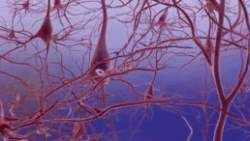
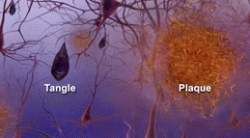
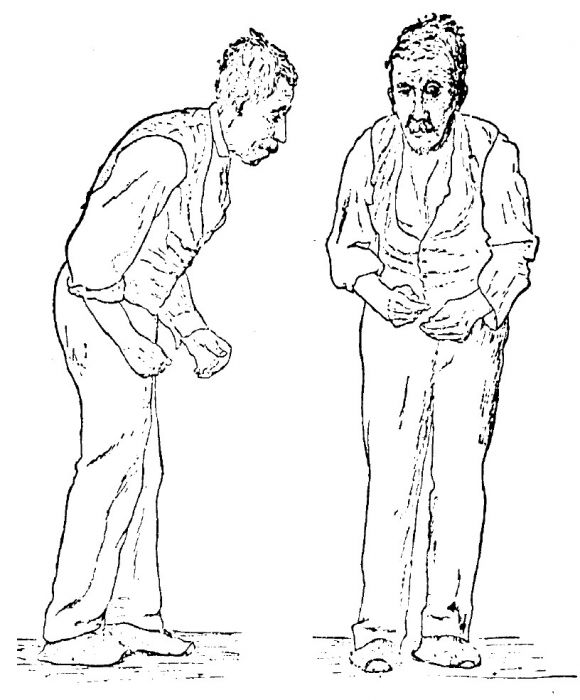
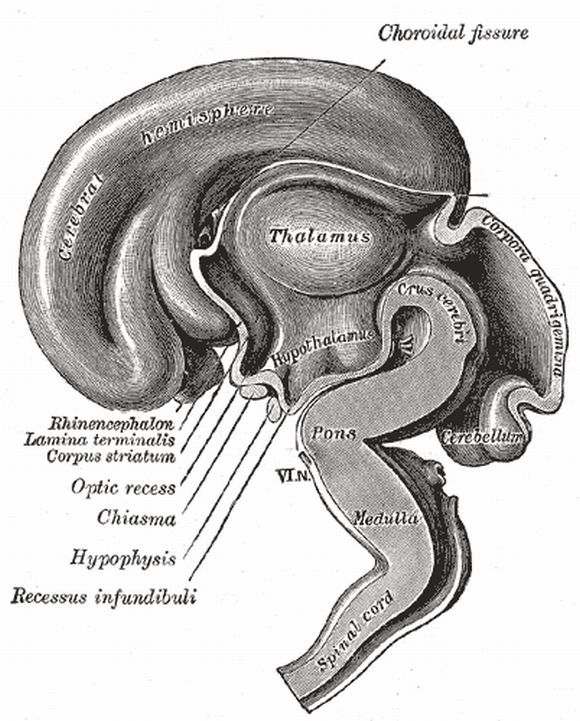

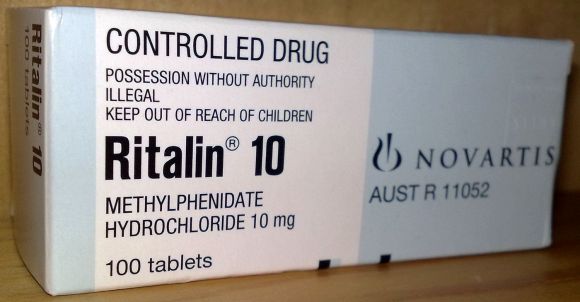
Comments